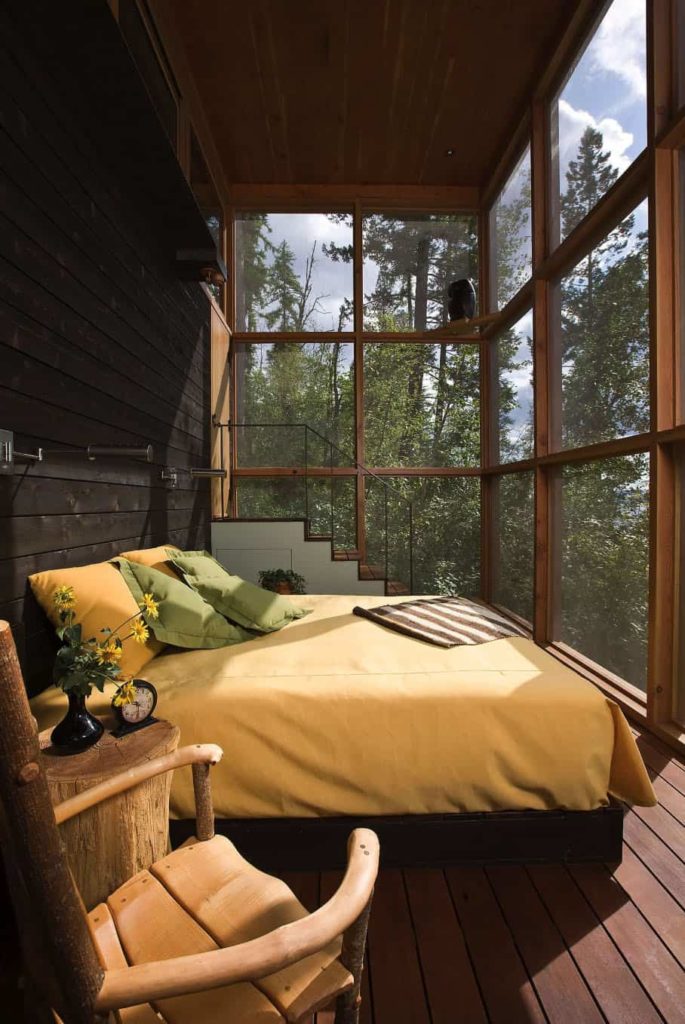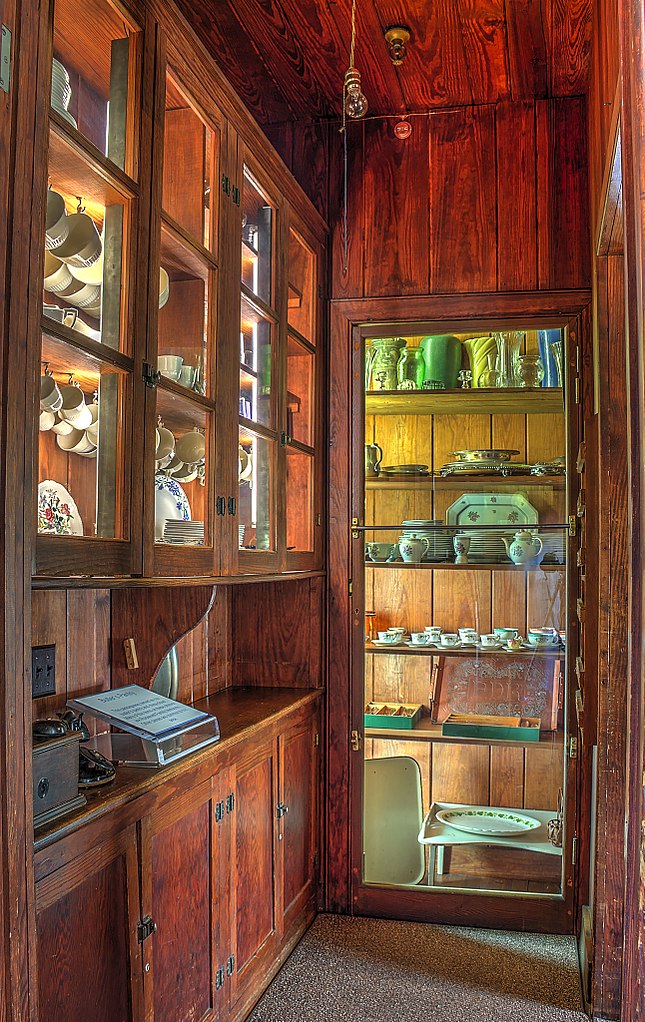By Cameron Sperance Globe Correspondent,Updated September 27, 2020, 12:00 a.m.
Home design, like fashion, follows trends and the ever-churning mantra of “out with the old, in with the new.”

Health professionals in the early 20th century touted the health benefits of screened sleeping porches that offered fresh air. Trunk rooms stored bulky luggage in Victorian homes between trips abroad. Telephone rooms gave privacy to those on a call.
Many of these features have fallen as much to the wayside as the hoop skirts and top hats worn by those who owned those homes during their peak popularity. But the current global pandemic could spark modern incarnations of historic features that suddenly have revived purpose.
“We take Grandma’s house — which is the house that has the trunk room, the sleeping porches, the tiny little bedroom — and reassess the spaces for what they need to be used for today,” said Hannah Miller, partner at Belmont home repurposing firm HERhomes. “It doesn’t have to be that daunting.”
More often than not, some of the old features Miller and her business partner and mother, Jamie Atkins, encounter are beyond repair. Termites destroyed dual-floor sleeping porches on a recent home renovation, but the mother-daughter team was able to repurpose the spaces into a first-floor family room and as a component of the second-floor owner suite.
The benefits early 20th-century health professionals tied to a sleeping porch also align with the current global crisis.
Fresh air and a good night’s sleep were tied to strong immune systems when many people were fearful of contracting tuberculosis or succumbing to the 1918 flu pandemic. Those porches became must-have home accessories for everything from bungalows to sprawling Victorian mansions.
A modern revival may be less about sleeping outside and more with simply having access to fresh air.
“I think you’re going to see a big return to outdoor space, even in high-density housing,” said Anne Tate, a professor of architecture at the Rhode Island School of Design. “The ability to get out in the air from a multistory building is going to become the equivalent of the 1918 [pandemic-inspired] zoning laws. Instead of windows in every room, it’ll call for something like balconies in every apartment.”
The sleeping porch, like other historic home features, faded out largely due to technological advancements in climate control, as well as changes in how owners viewed their own homes. Homes often were designed around seasonal changes, and the occupants moved around to various components like summer kitchens or north- and south-facing living rooms based on the time of year and where the sun hit the house.
“I think air conditioning has been devastating for the special components of housing in some ways,” Tate said. “We forgot how to use basic climate design tools because we no longer needed to.”
A renewed focus on outdoor space isn’t the only historic home component Tate expects to return to the residential space.
Quarantine led to much of the world learning how to work from home and increasingly rely on one’s own cooking rather than the services of local restaurants. The longer people were in lockdown, the more they took note of what was practical and what wasn’t in their own home.

The butler’s pantry dates back to rooms where china and silverware were stored and meals were plated near the dining areas of English estates. These types of storage areas aren’t typically common but have grown in popularity, even in middle-class American homes, in recent years as more of a flashy way to store kitchen items.
But they could return to their more practical use if at-home cooking remains a legacy of the pandemic.
“In the 1980s, kitchens and bathrooms were the kind of show-off spaces in the house. You’d have everyone in your kitchen to watch you be a gourmet cook,” Tate said. “I think people are changing. Now they’re really cooking for their families and eating again. I think that some of those things that COVID is changing is maybe bringing back the dining room or rethinking the kitchen in a way.”
Houses still get built with dining rooms, said William Morgan, architecture historian and author, “but how rarely do people eat in the dining room? Although a lot of new houses have these flowing spaces of living, dining, kitchen, cooking is done in the microwave.”
So not every home feature of yesteryear is expected to return.
Morgan said his grandfather had a designated place in the basement for shining his shoes, and “the 1915 house we bought in Providence had a garage, complete with a grease pit, designed so the owner could stand underneath his car and change the oil. And now most garages are for the storage of superfluous crap.”
Brownstones in neighborhoods like Brooklyn or even Boston’s South End included so-called “coffin corners” or niches at stairwell turn points to enable undertakers to move coffins between floors in tight quarters.
“We call them ‘micro-programs.’ They’re kind of memes that sort of capture the minds of clients [at that point in history],” said Kyna Leski, a RISD architecture professor and founding principal at Providence-based 3sixØ Architecture. “People would die at home, and they’d have to bring the coffin around the staircase, so they’d have to make a dent in the wall for that.”
Trunk rooms were popular home storage features of the upper class who lived in Back Bay or Beacon Hill town homes but took annual trips around the world and needed a dedicated space to store their bulky luggage.
“You literally surrounded yourself with evidence of the world as you understood it, and you understood the world by going on a ‘grand tour,’ ” said Richard Griswold, associate provost and dean of students at Boston Architectural College. “In the 19th century, women dressed like Christmas trees. They were just covered with corsets, festooned hats, feathers, and the whole nine yards. They traveled with that [bulky luggage] because the overnight bag didn’t exist.”
Trunk rooms aren’t likely to come back in fashion, especially in downtown Boston, because they were extravagant spaces for a time when housing wasn’t as dense as it is today, the experts said. More single-family properties proliferated the urban core back then.
“For me, it cuts two ways. In Back Bay there are a lot of empty-nesters moving back in and loving the idea of some of these more formal features and can pay for them, too,” Griswold said. “Generally speaking, though, they’ve gone from being palaces to apartments, so space is much tighter.”
But even something like a telephone room, which was meant as a private place to take a phone call, has a new calling now that more people are working from home — or even in open-floor plan work settings with fewer private offices.
For an architect and urbanist like Tate, the pandemic could inspire home buyers to return to historic trends and focus less on the next move. Rather than matriculate from a starter home to an upgrade home to a dream home before downsizing as an empty-nester, post-pandemic trends could be more about making a current dwelling a home for a lifetime.
“The [current] idea is you’re supposed to keep moving, and that churn creates profit for lots of people,” Tate said. “But with these older houses, you could stay there, and have the house adapted for you instead of you having to move and make this investment every time. I think if you just studied those plans, they have this incredible resilience built into them.”
Cameron Sperance can be reached at camsperance@gmail.com. Subscribe to the Globe’s free real estate newsletter — our weekly digest on buying, selling, and design — at pages.email.bostonglobe.com/AddressSignUp. Follow us on Facebook, Instagram, and Twitter @globehomes.



